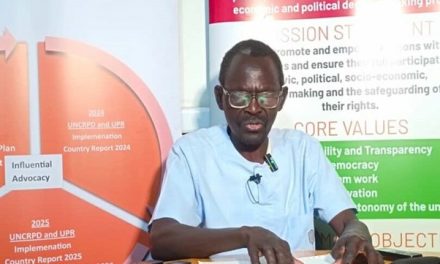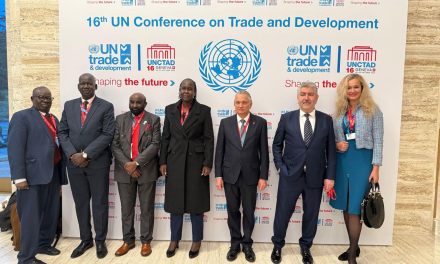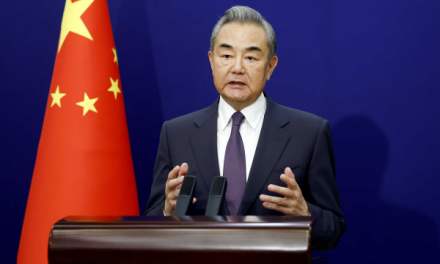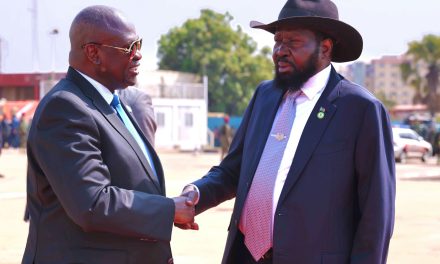
America’s Coercive Diplomacy and Its Harm

Source: Xinhua
I.The United States’ coercive diplomacy has a notorious record
II.The United States has many means of coercive diplomacy
III.The United States’ coercive diplomacy endangers the whole world
Conclusion
Introduction
The United States is used to accusing other countries of using great power status, coercive policies and economic coercion to coerce other countries to obey and engage in coercive diplomacy, but in fact, the United States is the instigator of coercive diplomacy. The invention rights, patent rights and intellectual property rights of coercive diplomacy all belong to the United States. For a long time, the United States will do everything possible to coerce other countries, and the United States has a very disgraceful “dark history” in coercive diplomacy. Today, coercive diplomacy is a standard instrument in the US foreign policy toolbox, and containment and suppression in political, economic, military, cultural and other fields have been used to conduct coercive diplomacy around the world for pure US self-interest. Countries around the world have suffered, with developing countries bearing the brunt of it, and even US’ allies and partners have not been spared.
Based on abundant facts and data, this report aims to expose the evil deeds of US coercive diplomacy in the world and make the international community better understand the hegemonic and bullying nature of US diplomacy, and the serious damages caused by US actions to the development of all countries, regional stability and world peace.
I. The United States’ coercive diplomacy has a notorious record
◆ In 1971, Alexander George, a professor at Stanford University, first put forward the concept of “coercive diplomacy,” which was used to summarize the policies of the United States on Laos, Cuba and Vietnam. In his view, coercive diplomacy concerns the use of threat or limited force to coerce an adversary to stop or reverse its action. In the past half century, the US has never stopped engaging in coercive diplomacy in spite of great changes in the international structure. From economic sanctions to technical blockade, and from political isolation to threat of force, the US has demonstrated what coercive diplomacy is to the world with its own actions.
◆ The developing countries are the “worst-hit areas” of America’s coercive diplomacy. In 1962, the United States imposed an economic, commercial and financial embargo against Cuba which continues to this day. The US-Cuba diplomatic relations were restored in 2015, but the US did not fully lift its blockade against Cuba. In 2017, the Trump administration tightened sanctions on Cuba again. In 2021, the Biden administration twice extended the “Trading with the Enemy Act,” which has served as the legal basis for the blockade and embargo against Cuba. The 61-year-old embargo has brought enormous economic losses and grave humanitarian disasters to Cuba. The US sanctions and blockade on Cuba cover almost everything from fuel, food and daily necessities to medicine, leaving the island facing a chronic and severe shortage of supplies. During the COVID-19 pandemic, the United States also blocked Cuba’s access to raw materials for vaccine production. The People’s World, an American news website, pointed out in an article that the blockade imposed by the United States had prevented Cuba from obtaining materials for the manufacture of syringes in time. Since the United States has banned third countries from selling ventilators to Cuba, Cuba has not been able to purchase the ventilators needed to save critically ill COVID-19 patients, which has caused great harm to the Cuban people.
◆ Since 2006, the US has imposed sanctions on Venezuela, preventing Venezuela from entering the US financial system. During the Trump administration, the US expanded economic and financial sanctions against Venezuela, froze all assets of the Venezuelan government in the US, and imposed sanctions on its oil, banking, mining industries and more than 140 government personnel, which severely hit the Venezuelan economy. Venezuelan crude oil production fell from nearly 2.5 million barrels per day in 2016 to just 300,000 barrels per day in 2020. During the COVID-19 pandemic, US sanctions made it difficult for Venezuela to obtain materials to combat the pandemic and basic commodities such as food, drinking water and gasoline in a timely manner. According to the report released by the UN Special Rapporteur Du Han on the Negative Effects of Unilateral Enforcement Measures on Human Rights, the sanctions have left more than one third of the population of Venezuela in a serious food crisis and a shortage of basic medical supplies and equipment; conditions of health care services have deteriorated and maternal, infant and seriously ill patients deaths have increased. In June 2020, the US Treasury Department announced the imposition of penalties on three Mexican entrepreneurs and eight Mexican companies, freezing their US assets, for allegedly helping Venezuela evade US sanctions, and prohibiting them from participating in any transaction involving US individuals and entities.
◆ Since 2006, successive US administrations have continuously strengthened sanctions on the Democratic People’s Republic of Korea (DPRK). Since 1988, the United States has for many years included the DPRK in the list of “state sponsors of terrorism.” In 2016, then President Barack Obama signed the “North Korea Sanctions and Policy Enhancement Act” to supplement the sanctions already imposed by past administrations. In 2017, the US imposed further sanctions on the DPRK through the “Countering America’s Adversaries Through Sanctions Act” and demanded that SWIFT cut off the DPRK banks from their global banking network. The US sanctions on the DPRK include restrictions on trade imports and exports, prohibition on the DPRK citizens from working overseas, freezing of assets in the US, and prohibition on economic ties with the DPRK. In November of the same year, three aircraft carriers of the US Navy, including USS Reagan, USS Roosevelt and USS Nimitz, appeared in the East China Sea at the same time and jointly held high-intensity military exercises with the South Korean Navy, which attracted great attention from the outside world.
◆ Twice kicking Iran out of the SWIFT system and disrupting the international financial order. The United States first imposed economic sanctions against Iran in 1979, when it froze $1.2 billion worth of Iranian assets abroad and eventually expanding to a full trade embargo. As the Iranian nuclear issue has evolved, the US has banned Iranian financial institutions from using the US clearing and payment system to settle transactions in US dollars, forcing Iran to decouple from the US dollar. In 2012, in order to contain Iran in an all-round way, the United States and the European Union removed Iran from the SWIFT system, making it impossible for Iran to conduct cross-border transactions with the US dollar, the euro and any international currency, and the value of Iran’s currency depreciated by about 38% in a year. Iran’s foreign trade fell into recession, with imports and exports falling sharply and crude oil exports cut by half. In 2018, the Trump administration unilaterally withdrew from the Iran nuclear deal and once again kicked Iran out of the SWIFT system. According to a study by a US think tank, Iran has lost half of its oil exports and 30% of its foreign trade income due to the sanctions. The US government has wantonly wielded the club of sanctions against Iran, which has sparked criticism from all quarters. In 2019, Jake Sullivan, who is now national security advisor to President Joe Biden, wrote an article criticizing the Trump administration’s policy toward Iran, saying that it has nothing but coercion and no diplomacy.
◆ Sanctions imposed on Belarus. Since 2004, the United States has imposed 17 rounds of targeted sanctions on Belarus. Currently, 16 people, including Belarusian President Alexander Lukashenko, are under US sanctions ranging from travel bans to asset freezes. In addition, 10 Belarusian companies have been barred from the US market.
◆ Unilateral sanctions imposed on African countries such as Sudan. In 1993, the United States announced sanctions against Sudan. In 1997, the Clinton administration announced sweeping economic sanctions against Sudan. In 2017, the US still added Sudan to the list of “state sponsors of terrorism,” and various sanctions against Sudan continued to be implemented, including the prohibition on investments in, trade with, and loans to Sudan. Years of US sanctions have led to a severe humanitarian crisis in Sudan, with a large number of children across the country dying of malnutrition, according to a report released by the UN Office for the Coordination of Humanitarian Affairs in Sudan. In addition, the United States has imposed targeted sanctions against individuals and organizations in African countries such as Burundi, the Central African Republic, Somalia and Zimbabwe.
◆ All-round sanctions on Russia. In 2014, the US issued a ban on medium and long-term financing of Russia’s defense, financial and energy sectors. In April 2018, the US again announced sanctions against 38 Russian individuals and companies, freezing all their assets under US jurisdiction. In November 2021, the US announced further sanctions related to the Nord Stream 2 natural gas pipeline project. After the Russia-Ukraine conflict broke out, the US coerced many countries to issue the “Joint Statement on Further Restrictive Economic Measures” against Russia, banning the import of Russian crude oil, liquefied natural gas and coal, and restricting US investments in most Russian energy companies, while removing major Russian banks from SWIFT. To date, the United States and its allies have directly sanctioned more than 2,500 Russian companies, government officials and individuals.
◆ Violating the principle of fair trade and imposing tariffs on China. In July 2018, the US launched a trade war with China, announcing a 25% tariff on approximately $34 billion of goods imported from China; in August, an additional 25% tariff on $16 billion worth of Chinese goods was announced; and in September, the US announced yet again a 10% tariff on $200 billion of Chinese imports. In May 2019, it was announced that tariffs on the $200 billion of Chinese goods would be raised from 10% to 25%; in August, it was announced that additional tariffs on about $550 billion of Chinese goods exported to the US would be raised, escalating the China-US trade war.
Tech blockade against China in the semiconductor sector. In August 2022, the “CHIPS and Science Act” was enacted. The law, which plans to provide up to $52.7 billion in government subsidies for the US semiconductor industry, requires semiconductor companies that receive federal financial aid not to make substantive expansion in countries such as China. The US government has joined Japan, South Korea and Chinese Taiwan to form the so-called “Chip 4” in an attempt to limit the development of China’s semiconductor industry.
Using state power to suppress China’s high-tech enterprises. The previous administration of the United States launched the “Clean Network” program, which took national security and privacy of its citizens as an excuse, explicitly requiring the elimination of Chinese enterprises such as Huawei, Baidu and Alibaba in five aspects, namely, telecommunications networks, mobile application stores, mobile application programs, cloud services and undersea cables. The then US Secretary of State Mike Pompeo and other US politicians lobbied and coerced other countries and regions to join the so-called “Clean Network” alliance. Senior US officials even intimidated countries such as Cyprus, demanding that they not cooperate with Chinese 5G suppliers, or the consequences would be serious. The US has put more than 1,000 Chinese companies, including ZTE, Huawei and DJI, on various sanctions lists, using national security as an excuse to clamp down on Chinese social media apps such as TikTok and WeChat.
Under the guise of democracy and human rights, the US has hyped up questions concerning Taiwan, Hong Kong, Xinjiang. The “TAIPEI Act,” the “Hong Kong Human Rights and Democracy Act,” the “Uyghur Forced Labor Prevention Act” and other bills related to China have been produced, and they are firmly linked to issues of trade and technological exchanges with China. It unjustifiably interferes in China’s internal affairs and coerces Western countries into keeping with the US.
US hyped up the so-called “lab leak theory” of the coronavirus and spared no efforts to smear and stigmatize China. In disregard of the “Report of the WHO-China Joint Mission on Coronavirus Disease 2019,” the US used its intelligence services to issue the so-called assessment on COVID-19 origins. The US insists on politicizing and taking advantage of the issue of tracing the origin of the virus, casting a shadow over global cooperation to combat the pandemic.
◆ The US sanctioning Indian companies for engaging in oil trade with Iran for the first time. India’s Economic Times, The Times of India and other media outlets reported that the US imposed sanctions on Mumbai-based petrochemical trading company Tibalaji Petrochem in October 2022, which marks the first time that US imposed sanctions on an Indian company for engaging in oil trade with Iran. In April 2023, the Indian Foreign Ministry announced that the governments of India and Malaysia had agreed to settle trade between the two countries in Indian rupees.
◆ Applying coercive diplomacy with allies with no mercy. In the 1980s, Japan’s GDP was half that of the US. In order to eliminate Japan’s economic threat, the United States forced Japan to sign the “Plaza Accord” in 1985, forcing the yen to appreciate, which led to the rapid expansion of Japan’s domestic economic bubble, the collapse of the real estate bubble and the long-term stagnation of the Japanese economy.
In 1986, in response to the rise of Japan’s semiconductor industry, the US forced Japan to sign the “US-Japan Semiconductor Agreement,” initiated a “Section 301 Investigation” against Japan, and imposed trade sanctions on a variety of Japanese products such as semiconductors and computers, which undermined the competitiveness and potential of Japan’s semiconductor industry, seeing its market share fall from 50% of the global market to about 10% in 2019.
◆ Dismembering Alstom by means of “economic hostages.” In 2013, the US used the “Foreign Corrupt Practices Act” to arrest Frederic Pierucci, an Alstom executive, and coaxed him to enter into a plea agreement in order to obtain more evidence and information against Alstom. By 2014, to pressure Alstom, US authorities had arrested at least three more of Pierucci’s former colleagues, using “economic hostages” as bargaining chips. Under lobbying and pressure, Alstom had to accept an acquisition bid from General Electric of the US in 2015. In its review, The Economist said the US Department of Justice investigation had distorted the process by which Alstom sold assets, creating an advantage for potential US buyers.
◆ Wielding the tariff club at Europe and interfering in market competition. In 2018, the US government used Section 232 of the “Trade Expansion Act of 1962” to impose tariffs of up to 25% and 10% on steel and aluminum products respectively in several countries and regions, including the EU, purportedly on the grounds of safeguarding national security. In January 2021, to improve Boeing’s competitive advantage, the US Customs and Border Protection announced tariffs of up to 15% on imports from France and Germany, including aircraft parts, involving a total value of $7.5 billion.
◆ In recent years, the US has targeted its coercive measures on the semiconductor industry, “extorting” confidential data from many chip companies in the world and maintaining US dominance in the semiconductor industry. In September 2021, the US Department of Commerce issued a notice requiring companies in the semiconductor supply chain to provide relevant information “voluntarily” within 45 days, including 26 core items of data such as inventory, production capacity, supply cycle and customer information. In an interview with Reuters, US Secretary of Commerce Gina Raimondo said that if the companies refused, instruments such as the “Defense Production Act” would be used to get them to provide the data. Data from US government website shows that under pressure from the US, as of November 2021, more than 70 companies, including TSMC, UMC, Samsung, SK hynix and Japan’s Sony Semiconductor, have submitted information related to the semiconductor supply chain to the US Department of Commerce.
◆ In addition to the economic and financial sanctions, the US is also good at interfering, either directly or indirectly, in the internal affairs of other countries by supporting proxy wars, inciting civil wars, providing weapons and ammunition, and training anti-government forces, etc., to counter “disobedient” countries and regions. Since the 20th century, under the banner of “democracy” and “freedom,” the United States has promoted the “Neo-Monroe Doctrine” in Latin America, provoked “color revolutions” in Eurasia, and planned the “Arab Spring” in West Asia and North Africa, engaging in “peaceful evolution” in various parts of the world, wantonly engaging in hegemonic bullying and sending out a clear message that whoever follows it will survive and whoever defies it shall perish.
Since 2003, the US has played a hand in the “Rose Revolution” in Georgia, the “Orange Revolution” in Ukraine and the “Tulip Revolution” in Kyrgyzstan. The Financial Times reported that agencies such as the US National Endowment for Democracy and the US Agency for International Development have been instrumental in driving domestic protests in other countries. The main and immediate cause of the color revolution is to safeguard US interests such as strategic expansion and energy security, according to a British Open Democracy Network article.
◆ According to the American scholar Lindsey A. O’Rourke’s “Covert Regime Change: America’s Secret Cold War,” the United States carried out 64 covert regime change operations and six overt operations from 1947 to 1989. During the 1994 Haitian crisis, the US forced Haiti’s military government to abandon power through a small-scale invasion. The administration at the time hailed the action as a model of coercive diplomacy. In 2003, the Bush administration listed 30.3 billion US dollars in additional military spending for coercive diplomacy. The US, despite being so angry about outside interference, is the expert in it, The Guardian said.
II. The United States has many means of coercive diplomacy
◆ The hegemony of US dollar is an important foundation for US economic coercion. The “petrodollar,” the “one-vote veto power” of the United States in the International Monetary Fund and the World Bank, and the bilateral currency swap led by the Federal Reserve are all concrete manifestations of the hegemony of the US dollar. As an international settlement currency, the US dollar accounts for the majority of global trade and investment, enabling the US to pass domestic economic problems onto other countries through export inflation and trade deficits. The U.S. controls the pricing power of major global commodities and resources and can influence the economies and finances of other countries by controlling the exchange rate and interest rate of the US dollar. As a currency of international sanctions, the US dollar occupies a central position in the global financial system, enabling the US to cut off other countries’ dollar supply and trading channels and impose pressure and sanction on other countries by restricting the channels of financing and transaction remittance. Freezing property, imposing huge fines and refusing financial services are all the usual tricks of the US to impose economic blockade and financial sanctions on other countries by taking advantage of the US dollar hegemony.
Trade control is an important means of US economic coercion. The United States has various forms of trade control, including sanctions, restrictions on imports and exports, imposition of tariffs, elimination of subsidies and quotas, and has set up a variety of trade control lists to fit different purposes and targets, including lists of specially designated nationals, lists of entities, unverified lists, lists of military end users, and lists of industry sanctions. The US often wantonly imposes tariff in disregard of international law and international trade rules, forcing other countries to engage in unequal trade negotiations with it. In recent years, the US has frequently restricted investment in telecommunications, semiconductor, artificial intelligence and other emerging technologies sectors on the grounds of “endangering national security,” and included foreign entities or individuals in the entity list of export control, restricting their purchase of US technologies. Through the signing of executive orders, the US puts mandatory stops on foreign enterprises’ operations in the US or prohibits US entities or individuals from trading with foreign enterprises, imposing technological sanctions on other countries, thus seriously undermining the international economic and trade order and the process of economic globalization.
“Long-arm jurisdiction” is another commonly used means of US economic coercion. The US has enacted such domestic laws as the “Foreign Corrupt Practices Act,” the “Trading with the Enemy Act,” the “Countering America’s Adversaries Through Sanctions Act,” the “International Emergency Economic Powers Act,” and the “Export Control Act,” and cooked up a series of executive orders, directly imposing sanctions on specific countries, organizations or individuals. The US arbitrarily expands the jurisdiction of its domestic law, while applying ambiguous rules such as the “minimum contact principle” and the “effectiveness principle,” abusing domestic channels of judicial action to engage in “long-arm jurisdiction” with foreign entities and individuals.
◆ The promotion of the so-called democracy and human rights is a common trick of the US to carry out political coercion and interfere in the internal affairs of other countries. The United States has long promoted “American values” worldwide, played up “democracy versus authoritarianism,” wantonly interfered in the internal affairs of other countries, and attempted to shape other countries and world order with its own values and political system. They even interfere with and subvert the legitimate government of other countries in order to weaken rivals, pass on crisis, create chaos, and undermine stability.
The targets of US political coercion are all-encompassing. Be it an adversary or an ally, a developed or a developing country, a large corporation or a small organization, coercion is always the option for the US, as long as the US considers it profitable and the targets won’t bend to the will of the US. The US, under the banner of “promoting democracy,” carried out the “Neo-Monroe Doctrine” in Latin America, provoked the “color revolution” in Eurasia, and planned the “Arab Spring” in West Asia and North Africa.
US political coercion measures form an endless stream. The US uses its military bases, diplomatic agencies, intelligence agencies, non-governmental organizations, media organizations and other channels and resources according to different targets and situations-collecting information, exerting influence, creating public opinions, manipulating elections, supporting opposition parties, etc. to publicly and secretly, directly and indirectly, interfere in the internal affairs of other countries.
◆ A powerful military supports US in coercive diplomacy. The United States frequently utilize military coercion and wanton use of force in international relations. In recent years, the average annual military budget of the United States has exceeded $700 billion, accounting for 40% of the world’s total and exceeding the sum of the next 15 countries combined. The US is the world’s largest arms exporter, and it often relies on arms trafficking to boost revenue and provoke regional conflicts. US military facilities and personnel are located in all corners and key areas of the globe. According to a 2020 report on US overseas military bases, the US has more than 800 military bases around the world, with 173,000 people deployed in 159 countries across Europe, Asia, the Middle East and beyond.
The US frequently uses military force to initiate or participate in wars and conflicts of all sizes and forms. Between 1776 and 2019, the US conducted nearly 400 military interventions worldwide, half of which occurred between 1950 and 2019, according to the Tufts University report, “Introducing the Military Intervention Project: A New Dataset on US Military Interventions.” After World War II, major wars initiated or launched by the US include the Korean War, the Vietnam War, the Gulf War, the Kosovo War, the Afghan War, the Iraq War, the Libyan War and the Syrian War. Proxy wars are a common form of US military interventions, with countries such as Ukraine, Iraq, Afghanistan, Libya, Syria, Pakistan and Yemen suffering. According to the “Cost of War” project data of the Watson Institute at Brown University, conservative estimates show that the total number of military and civilian deaths caused by the US wars in the “post-9/11 era” is as high as 929,000, with at least 38 million people displaced.
◆ The soft powers of culture and science and technology are the covert means for the US to engage in ideological infiltration and coercive diplomacy. The US-led Western media and international social media have forcefully propped up and supported US coercive diplomacy. The US pursues double standards on freedom of the press and uses various means to smear and suppress foreign media outlets. The US abused its cultural hegemony, invested heavily in the media sector, supported its infiltration of ideas into other countries, and carried out inflammatory propaganda. Moreover, the US is used to fabricating false information to attack other countries, and peddling misleading public opinion globally using a purposefully built industrial chain.
The United States uses its cultural products to promote American values. Hollywood films account for more than 70% of the world’s market share. The values and lifestyle of the US are closely linked to its films and television programs, publications, media content, and programs of government-funded nonprofit cultural institutions, shaping a space for public opinion that sustains American cultural hegemony. It has seriously eroded the independence of other cultures and the diversity of world cultures.
US intelligence agencies have established a large number of “infiltration organizations” around the world. Various foundations and non-governmental organizations have become “middlemen” in exporting American values and “pioneers” in cultural infiltration. The National Endowment for Democracy, the Congress for Cultural Freedom and other American “infiltration organizations” and institutions have promoted American cultural and political views to other countries through financial support, training, publication and conference, to export American values and ideology to the world, and to pursue cultural hegemony.
III. The United States’ coercive diplomacy endangers the whole world
◆ Distorting the underlying theme of our times of peace and development. Peace and development, as the theme of our times, are the common cause for people of all countries around the world. The pursuit of peace is the eternal ideal and wish of mankind, and economic globalization is the realistic precondition of world peace. However, in recent years, under the guidance of the concept of “America First,” US hegemony, unilateralism, protectionism, isolationism and nationalism has become increasingly fierce. The US, taking its own interests first, disregards the urgent needs of all countries in the world for peace and development. It is keen to manipulate ideological issues, engage in zero-sum games, and set up various geographical “small cliques.” The US coercive diplomacy has cast a shadow over the cause of global peace and development by instigating “color revolutions” in the world, pouring oil over fire and seeking interests from geopolitical struggles.
◆ Disrupting the process of economic globalization and regional economic integration. Increasingly engaging in economic coercion around the world, the US has seriously undermined economic globalization and regional economic integration, resulting in the artificial segmentation and further fragmentation of the world economy. This has seriously reversed the course of economic globalization. In order to maintain its hegemony, the US is withdrawing from the pattern of global cooperation formed after World War II and has actually become the biggest disruptor of the rules of globalization. The WTO was almost paralyzed by US inaction, and the trend of global trade and investment liberalization and integration was blocked and undermined by the US. The US economic coercion has not only undermined global supply chains and industrial chains based on factor endowments and comparative advantages, reducing labor productivity, but also raised regional and even global production costs and hindered the process of regional economic integration.
◆ Hindering the development of emerging economies and developing countries represented by the BRICS countries. The economic sanctions and blockade imposed by the United States on developing countries such as Venezuela, Cuba, Myanmar and Syria have directly interrupted the sustainable development process of these countries. In these countries, the vast majority of the 17 goals of the United Nations 2030 Agenda for Sustainable Development, including the eradication of all forms of poverty throughout the world, the eradication of hunger, the realization of sustainable economic growth, sustainable industrialization, the reduction of inequality within and between countries, and sustainable cities and human settlements have been put out of reach by US coercion, and the cause of global development has repeatedly been frustrated. Economic sanctions imposed by the US on the BRICS countries, namely, China, Russia, India, Brazil and South Africa and emerging markets such as Argentina, Mexico and Turkey have severely harmed their economic interests.
◆ Intensifying division and antagonism in the international community. In order to maintain its global hegemony and contain the development of other countries, the US is keen to force other countries to join the “democratic alliance” by means of drawing ideological lines and imposing tariffs. Using the Ukraine crisis, the US rallies the European Union and other developed countries to join in on the sanctions against Russia, and coerces developing countries to take sides. It coerces European allies to join the US in continuing to impose sanctions on Iran, which has severely affected the livelihood and economic development of Iran. What the US has done has intensified the antagonism in the international community and raised the risk of the world falling into a new Cold War.
Conclusion
The United States is the inventor and master of coercive diplomacy. For a long time, the US, through various rogue means such as economic blockade, unilateral sanctions, military threats, political isolation, and technical blockade, has presented textbook cases of coercive diplomacy to the world. As US scholars have pointed out, the essence of US coercive diplomacy lies in the idea that “you are either with us or against us. The US should lead, and its allies should follow, and the countries that oppose the supremacy of the US will suffer.”
Shrugging off the fact that the US itself has engaged in coercive diplomacy everywhere, the US, out of political self-interest, readily tags China and other countries with the label of coercive diplomacy. It needs to be pointed out that an important tradition in China’s diplomacy is to uphold the equality of all countries large and small, and never to divide the world into different groups or engage in the practice of coercion and bullying. Moreover, China has always taken a clear-cut stand against hegemony, unilateralism and coercive diplomacy. China never threatens other countries with force. China never forms military coalition or exports ideology. China never makes provocations at others’ doorstep or reaches its hands into others’ homes. China never wages trade wars or groundlessly hobbles foreign companies. To slander China for engaging in the so-called coercive diplomacy is obviously just making trumped-up charges.
The international community can easily tell who is engaging in coercive diplomacy and who is coercing the whole world. Those who engage in coercion, sanctions, bullying, suppressing other countries and bringing chaos to the world, will eventually hurt themselves. The United States should address its old habit of wanton coercive diplomacy and return a just and rational international order to the world.


































